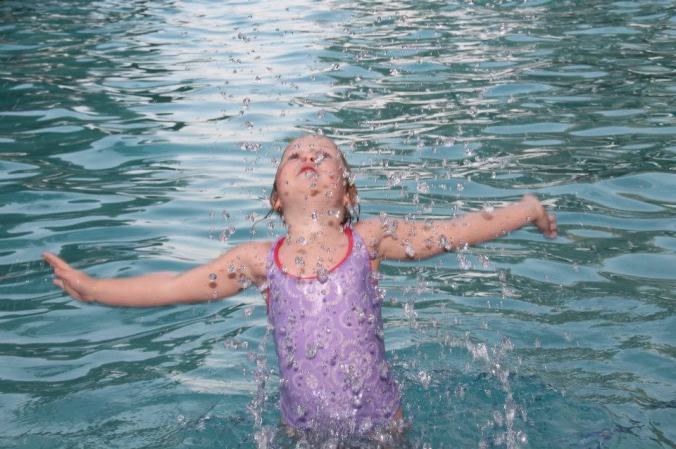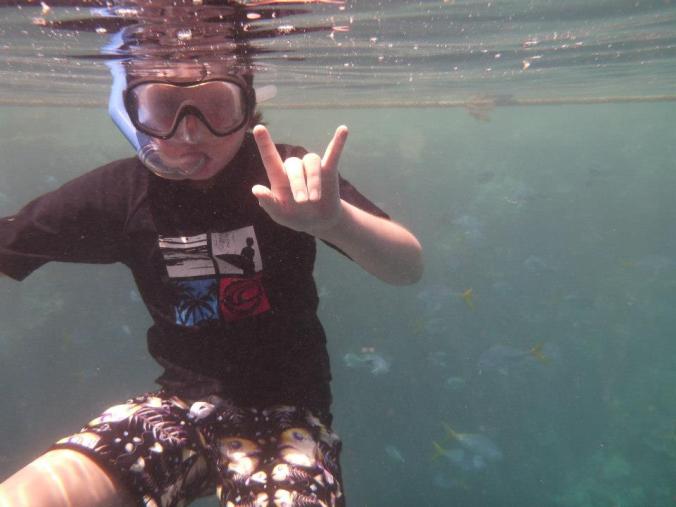9-days away from the everyday, 540 km of bike riding and a break-day in beautiful Hervey Bay ~ Oh yeah, I had to do this!
There are Mums everywhere that love parenting but dream of getting away for a week, you know, just to take a break from the everyday routine. I’ve been busy trying to be a great Mum (+9 years) and I’ve also been studying on-line so that I can teach ICT/Business in Australian High Schools. I needed a break! Cycling wasn’t my first choice….if my best-friend in Canada could have managed it I would have met her in Hawaii for a week in a resort, but it just didn’t work out for us this year. So if I was going to do something it would have to be alone. I love bike riding so I thought the Cycle Queensland 2012 would be a fun thing to do. 🙂

Day 1: Gayndah (56km loop)
Excitedly, I woke up at 4am on September 8 and got ready for my cycling adventure. My wonderful husband and great kids (9-year old son & 4-year old daughter) dropped me off in Brisbane to catch the 5:30am bus to Gayndah. By 10:15am I was in Gayndah getting a lovely elderly gentleman to put my bike back together. I put my tent up. At noon all the riders (over 800 cyclists) lined up at the start. The atmosphere was happy, buzzing with excited people who were all about to start this fun 9-day event. I had mixed emotions! I looked around this massive crowd and immediately felt lonely; I missed my kids already! What? I cried a little too. I was so happy when we finally got started and I got into the bike ride. But then this massively long and steep hill appeared and I wondered why I had decided to do this thing…”are you nuts? you paid for THIS? Just get up this mountain Elke!! Go! Go!” Fortunately, the downhill afterwards was lovely and during this ride I also met a new friend.

The start! Feeling lonely in a crowd….a strange feeling.

Ahhhh, the hill that nearly broke me! 🙂

ouch, ouch, ouch!
Day 2: Gayndah to Biggenden (65km)
Thank goodness for this lovely ride! I had my doubts after day 1 but then I zoomed through beautiful country on flat roads to Biggenden. The sun was warm on my legs at 7am and I saw lots of kangaroos in the distant fields while riding. I bought a Biggenden magnet at the Biggenden chemist (pharmacy), put my tent up next to my new friend’s tent and then sat back and enjoyed the view.

lovely, calming scenery between Gayndah and Biggenden…..and no big hills to climb

cycling away from the everyday…..a beautiful ride

My tent at the Biggenden campsite
Day 3: Biggenden to Maryborough (84km)
Hills, hills, hills! My body felt good this day but the hills just kept coming on this ride. At least all these hills kept my mind off the fact that I was missing my kids & husband big time! The best part about this day was the great band that played after dinner….I got up to dance with some new friends that night and had a blast! 🙂

a great band that evening
Day 4: Maryborough to Hervey Bay (83km)
I felt strong on this ride. I did this in under 4 hours, including 2 lovely stops along the way. I am used to cycling on busy roads so that was an advantage for me during this ride. I put up my tent, did the laundry at the caravan park, had a lovely coffee and then walked along the shoreline with a friend.

getting into Hervey Bay

pretty
Day 5: Hervey Bay (a break day)
I didn’t touch my bike today! 🙂 I enjoyed a lovely day of whale watching and walking around Hervey Bay with a new cycling friend.

Here I am on the 1107m long Urangan Pier

baby whale tail

always amazing to see whales
Day 6: Hervey Bay to Tiaro (79km)
Back on the bike! This was one of my favourite rides; I felt strong and fast. Tiaro was my favourite camp spot; very pretty and the food stalls run by the community were excellent. Great live band again that night.

lovely spot just before we rode into Tiaro

A view of the mountains around Tiaro. We had 2 shower trucks, 2 toilet trucks, on the right you can see the catered food tent and dining tents.
Day 7: Tiaro to Gympie (102km)
This was the big one! A very long, windy and hilly ride but I got through it and I felt great (yet also exhausted & sweaty!) once I accomplished it. The best part of this ride was the Dickabram Bridge. This bridge is the oldest remaining large steel truss bridge in Queensland. It was built in 1886 and spans the Mary River. I was still missing my family on this day but by then I had a nice routine of meeting fun friends at breaks and dinner time.

Dickabram Bridge, Miva

There were approx. 140 volunteers to help organize, set-up and run this massive adventure. The volunteers were great. Here is one volunteer entertaining us with lovely music while we crossed the Dickabram bridge

Here I am with the Dickabram Bridge in the background. This was a great break spot to chat with friends and enjoy some homemade cake slices provided by the local community groups
Day 8: Gympie to Cooroy (59km)
More hills in absolutely gorgeous country. I was looking forward to the end of this ride because my husband would be picking me up from Cooroy.
I decided to end my cycling adventure on this day. It wasn’t a difficult decision for me….another night in a tent and an easy 30km ride to the finish line OR a wonderful afternoon with my husband and enjoying a luxurious evening in a resort hotel at Noosa. It was a wonderful way to end my week long cycling adventure. 🙂

early morning ride in the country around Gympie

awesome scenery while riding through Pomona

A great afternoon at Noosa beach with my husband

Here I am relaxing in the Noosa resort pool. I’m probably thinking about the 510 kms that I had cycled in the past week and all the great people that I had met.
Day 9: my kids
My husband and I drove back to our home in south Brisbane. I unpacked my bags and did 3 loads of washing. I then drove another 2 hours down the coast to the Byron Bay, New South Wales region to pick up my kids from my Mum’s place. The drive down the coast gave me time to think about all of the experiences that I had during the last week. I had met many wonderful people of all different ages and fitness levels. I cycled 510 kms and enjoyed most of it (I could have done without that mountain in Gayndah!). I got to have a break from my daily routine and I was surprised at how quickly I had missed my children. I did not miss the study! Oh and how great are my Mum and Dad for taking great care of my children for 9 days?!!! Thanks to Mum & Jim. 🙂

My awesome kids at Wategos beach, Byron Bay













 Reynolds
Reynolds





























